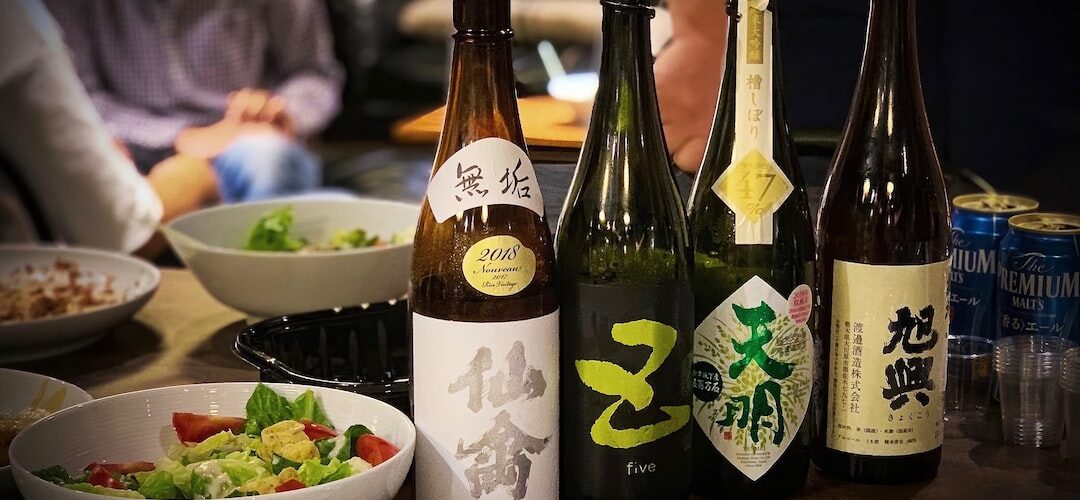Are you a sake lover looking to elevate your knowledge of this traditional Japanese drink? Do you want to find your favorite flavor among the various sake varieties available in the market?
Then, our Sake Taste Test Challenge is perfect for you! Join us on this journey as we compare and contrast different types of sake and discover new flavors that will enhance your sake experience.
Different Types of Sake
Sake can be categorized into several types based on its quality, production method, and ingredients used. According to our expert sake adviser, some of the most common types of sake include:
Junmai
Junmai sake is made with only rice, water, yeast, and koji for fermentation. It has a rich flavor and a full-bodied texture. This type of sake is perfect for those who prefer a more traditional and robust taste.
Ginjo
Ginjo sake is made from highly polished rice, producing a lighter and more delicate flavor profile. It’s often described as smooth and fruity. This type of sake is popular among beginners and those who prefer a lighter taste.
Daiginjo
Daiginjo is the highest quality sake, made from rice that has been polished even more than ginjo. It has a fragrant aroma and a very smooth taste. Daiginjo is considered the top tier of sake and is perfect for special occasions.
Nigori
Nigori sake, also known as “cloudy sake,” is a type of sake that is unfiltered, giving it a distinctively opaque appearance. This unique characteristic not only sets it apart from other types of sake but also contributes to its sweeter flavor profile.
With its milky and slightly thicker texture, Nigori sake is often favored by those who appreciate dessert-style drinks. Moreover, this delightful libation boasts a lower alcohol content, making it a perfect choice for those seeking a more relaxed and enjoyable drinking experience.
Honjozo
Honjozo sake is made with a small percentage of brewer’s alcohol added to the fermentation process, which brings out the aroma and flavor. It’s a versatile type of sake with a light, slightly dry taste and a fragrant aroma. Honjozo is often served warm, making it the perfect sake variety for those chilly evenings.
How to Compare and Contrast Sake Varieties
As you try different types of sake, there are a few key factors to consider when comparing and contrasting them. Here are some:
Aroma
The delightful aroma of sake is a sensory journey that can captivate your senses. As you explore different types of sake, you may encounter a range of scents that evoke images of blooming flowers, luscious fruits, or even the earthy and savory essence of nature. Take a moment to savor each whiff, allowing the intricate aromas to unfold and transport you to a world of nuanced flavors.
Flavor
Each sake variety has its distinct flavor profile, offering a delightful range from lusciously sweet to refreshingly dry, and everything in between. Please take a moment to savor and appreciate the intricate nuances that each sip reveals, as they dance across your palate, creating a symphony of flavors that tantalize your taste buds.
Texture
Sake, a traditional Japanese rice wine, offers a delightful range of textures that can cater to various preferences. From the refreshing and silky smoothness of a light sake to the indulgent and robust full-bodiedness of a rich variety, each sip unveils a unique mouthfeel. Take your time to savor and appreciate the nuanced textures that accompany different types of sake, as it adds to the overall sensory experience of this revered beverage.
Food Pairings
Sake, a versatile and sophisticated Japanese rice wine, is renowned for its ability to harmonize with a wide range of cuisines. Whether indulging in the delicate flavors of sushi, savoring the aromatic spices of Thai cuisine, or relishing the rich umami of Japanese hot pot, sake effortlessly complements and enhances the dining experience with its nuanced taste and smooth texture. Explore the vast world of sake and discover the perfect pairing for every culinary adventure.
Temperature
The temperature at which sake is served plays a crucial role in shaping its taste and aroma. Sake connoisseurs believe that different types of sake are best enjoyed at specific temperatures.
For instance, chilled sake tends to highlight the crisp and refreshing qualities, while room temperature sake offers a balanced and nuanced flavor profile. On the other hand, warming sake can enhance its richness and bring out deeper, earthy notes. To truly appreciate the versatility of sake, it’s worth experimenting with different serving temperatures to find the perfect match for each variety.
Clarity
The clarity of sake not only adds to its visual appeal but also offers valuable insights into its quality and flavor profile. When sake is clear, it often exhibits a refreshing and refined taste, characterized by its crispness. On the other hand, cloudy or unfiltered sake, such as Nigori, tends to possess a more indulgent and sweeter flavor. This adds a unique dimension to the tasting experience.
Age
The age of sake can greatly influence its flavor and aroma. Most sake is meant to be consumed within a year or two of bottling, and unlike wine, it usually doesn’t benefit from extensive aging.
However, some types of sake, such as Koshu, are aged for several years to develop deep, rich flavors and a golden color. These aged sakes can offer a unique tasting experience with complex, often nutty or caramel-like flavors. When comparing different types of sake, consider the age and how it may have influenced the sake’s characteristics.
Learn About Comparing Different Types of Sake
Learning about the different types of sake is not enough to fully appreciate its nuances; you also need to understand how to compare and contrast them. With guidance from our expert sake adviser, you’ll not only discover new flavors but also elevate your knowledge of this traditional Japanese beverage.
So, join us on this journey and find your favorite flavor among the diverse sake varieties available in the market! Let’s raise our glasses and say “Kanpai” to the wonderful world of sake. Cheers!
Is this article helpful? Keep reading our blog for more.






Add comment